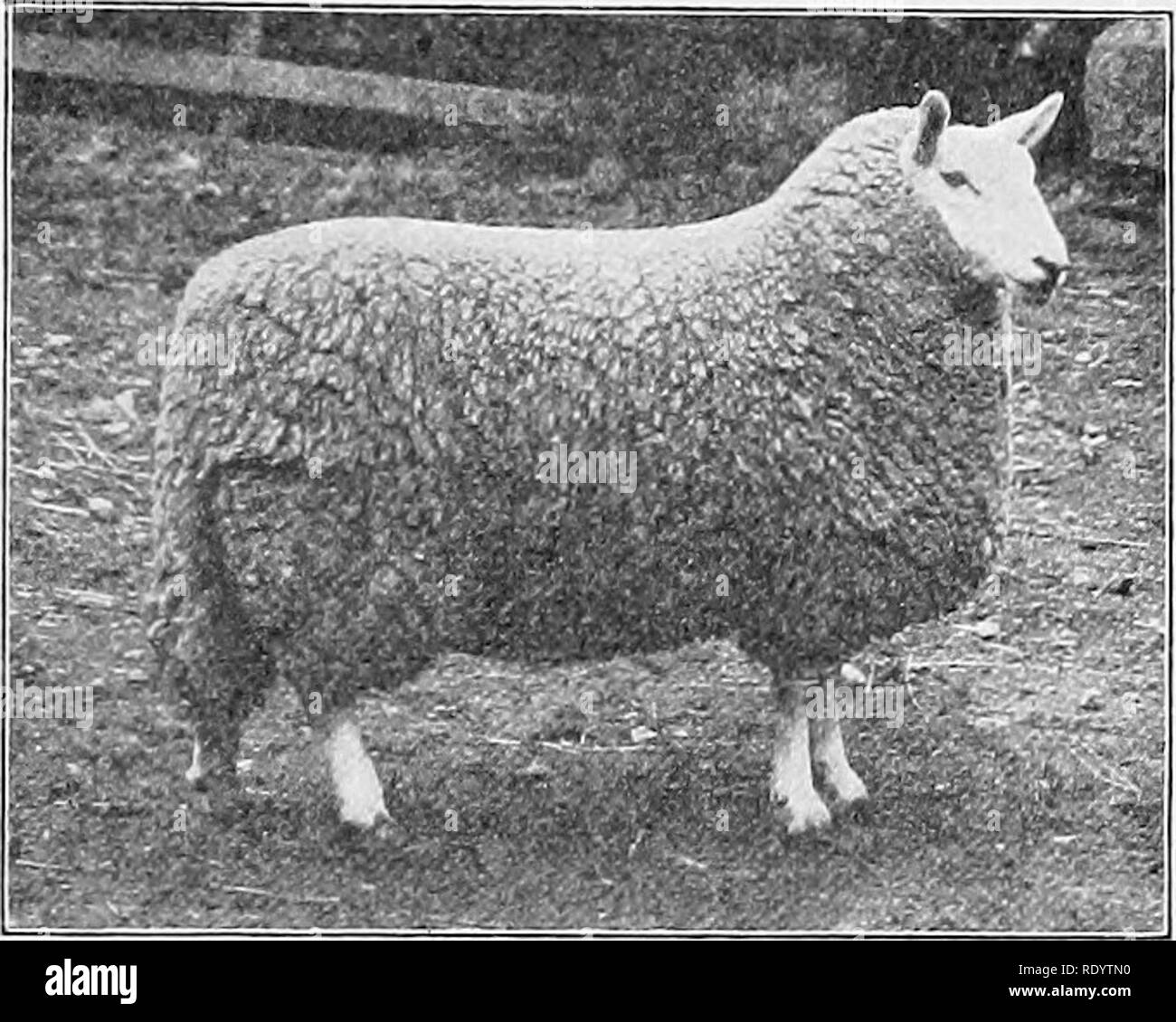. Types and breeds of farm animals. Livestock. THE CHEVIOT 601 The Cheviot as a mutton producer stands high. In England the mutton of this breed, which is rarely too fat and has very superior quality, ranks in the first class. External fat is not abun- dant, but there is a desirable proportion of lean to fat. Professor Wallace of Scotland states that ewes fed on turnips twelve to four- teen weeks, and wethers from the hills at three years, weigh, killed and dressed, 60 to 70 pounds. Wethers a year younger, fed tur- nips, weigh about the same. The Cheviot at the Smithfield Fat- Stock Show has a

Image details
Contributor:
The Book Worm / Alamy Stock PhotoImage ID:
RDYTN0File size:
7.1 MB (404.9 KB Compressed download)Releases:
Model - no | Property - noDo I need a release?Dimensions:
1767 x 1414 px | 29.9 x 23.9 cm | 11.8 x 9.4 inches | 150dpiMore information:
This image is a public domain image, which means either that copyright has expired in the image or the copyright holder has waived their copyright. Alamy charges you a fee for access to the high resolution copy of the image.
This image could have imperfections as it’s either historical or reportage.
. Types and breeds of farm animals. Livestock. THE CHEVIOT 601 The Cheviot as a mutton producer stands high. In England the mutton of this breed, which is rarely too fat and has very superior quality, ranks in the first class. External fat is not abun- dant, but there is a desirable proportion of lean to fat. Professor Wallace of Scotland states that ewes fed on turnips twelve to four- teen weeks, and wethers from the hills at three years, weigh, killed and dressed, 60 to 70 pounds. Wethers a year younger, fed tur- nips, weigh about the same. The Cheviot at the Smithfield Fat- Stock Show has always made a good place for itself, and in 1914 Archibald MacNeilage, ed- itor of the Scottish Farmer, stated that as a mutton breed at this show it has been pre- eminent from the begin- ning. Henry and Morrison show^ from Smithfield Club records that 53 yearling wethers averaging five hun- dred and ninety-two days and 224 pounds live weight made an average daily gain of. 3 7 pound, and 3 5 wether lambs weighing an average of 141 pounds at two hun- dred and thirty-eight days gained .59 pound daily, surpassing both Shropshire and Southdown in daily gain. In the carcass tests at the Smithfield Show 54 Cheviot lambs dressed 59 per cent carcass, which is better than average. At the 1911 International Live-Stock Exposition, in the carcass contest the second-prize yearling wether was a Cheviot shown by Wiscon- sin University that had a live weight of 160 pounds and dressed 60 per cent carcass. The crossbred or grade Cheviot has much merit as a mutton producer. The use of Border Leicester or Lincoln rams on aged Cheviot ewes has been practiced for a great many years in the border country, such half-breds having a comparatively high 1 Feeds and Feeding (1915), p. 518. ^ Digitized by Microsoft®. Fig. 283. A Cheviot yearling ewe, first prize in class at the Edinburgh Show, Scotland, 1904. This is a fine example of Cheviot style and character. Bred and exhibited by J. R. C. Smith, Mowhau